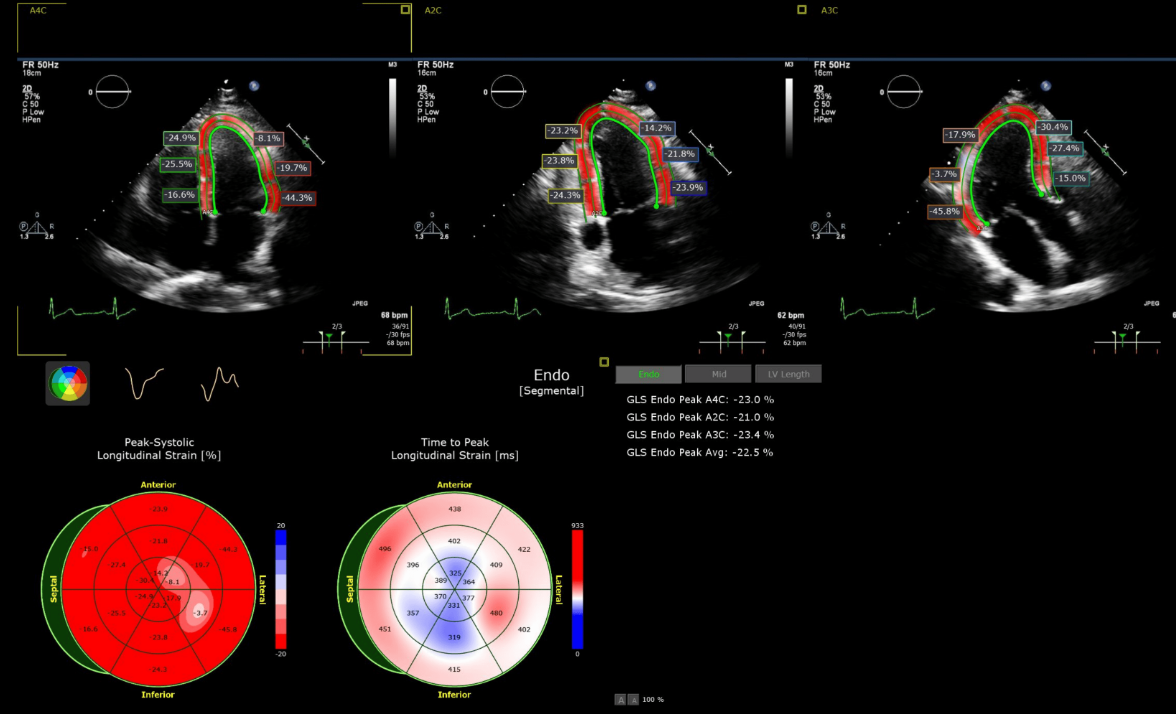
2D Echocardiography
2D echo is the classic workhorse of heart imaging—simple, safe, and incredibly informative. It uses high-frequency sound waves to create real-time, two-dimensional images of your heart, allowing doctors to see the size, shape, and motion of the heart’s chambers and valves

Strain Analysis
Strain analysis in echocardiography is a powerful technique used to assess how well the heart muscle deforms during contraction and relaxation.

3D Echocardiography
3D echocardiography is like giving your heart a high-definition, three-dimensional photoshoot.
It builds on traditional 2D echo by capturing volumetric images of the heart, allowing clinicians to view structures from any angle in real time.